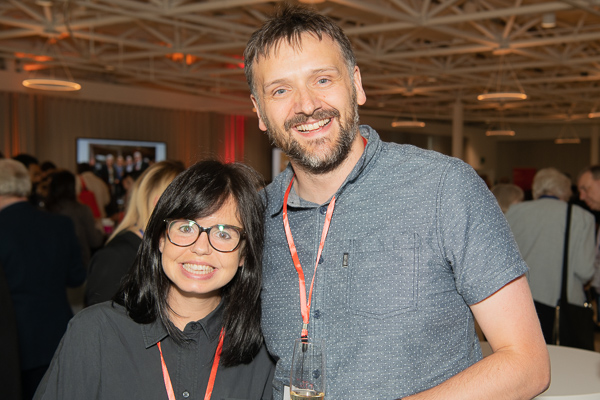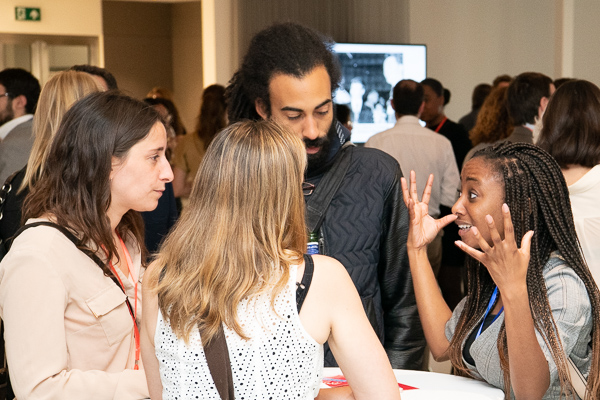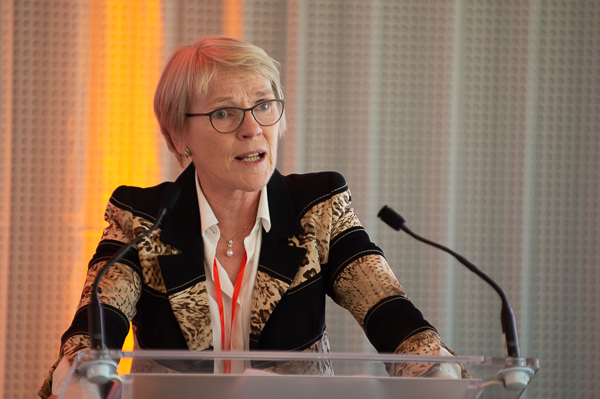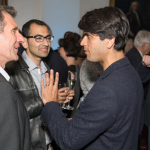Plans for an ambitious new gallery that describes how London turned into a global hub for science were announced this week at the annual Scientists Meet the Media event.

In September, the Science Museum will open Science City 1550-1800: The Linbury Gallery to show how the capital grew into global hub for trade, commerce and scientific enquiry over two and a half centuries, drawing on three internationally-important collections: our own, the King George III collection of King’s College and from the Royal Society, said Roger Highfield, Science Director.

The exhibition is curated by Alex Rose and Jane Desborough and supported by the Linbury Trust, National Lottery Heritage Fund, DCMS/Wolfson Museums and Galleries Improvement Fund and other generous supporters.

Highfield gestured at the panoramic view from the museum’s 5th floor Illuminate space to refer to a distant precursor of the annual Scientists Meet the Media event, at the original Gresham College, what is today Tower 42 – the NatWest Tower.

During the 1660s architect-mathematician Christopher Wren, chemist Robert Boyle and diarist Samuel Pepys met there and formed the Royal Society, which declared the Tudor philosopher Francis Bacon their spiritual father and championed a new and controversial method: experiment.

Highfield also wrote an article in this week’s Evening Standard that argued that this long history shows that London is well placed to weather current political uncertainty.

Professors, authors and editors aplenty attended the annual Scientists Meet the Media event, marking the 27th anniversary of the very first gathering in the Museum to foster mutual understanding between the inhabitants of Fleet Street, broadcasters and Britain’s laboratories.

The annual event is organised with the Royal Society, supported by Wired UK, and sponsored by Johnson & Johnson Innovation.

Julie Maxton, Executive Director of the Royal Society, said that London had for centuries been international, ‘outward looking and integral to the network of science.’

‘The threat of Brexit still hangs over us,’ she said. ‘None of us thinks that science hasn’t been affected…we, as the science community, that we must keep doing what we have done for centuries, and use science as a tool for international collaboration and good.’

Greg Williams, Editor-in-chief, Wired, congratulated the winners of the annual ‘Oscars for science journalism’, organised by the Association of British Science Writers, ABSW, judged by Highfield among others, and presented by science author Gaia Vince and Emma Kohring from the awards sponsors Johnson & Johnson Innovation.

Williams talked of the importance of the media for science, in ‘convening communities of curious minds,’ and challenging the untruths that propagate on the internet.
Emma Kohring called the night a ‘wonderful evening of brilliant minds connecting!’ She then said, ‘Johnson & Johnson Innovation are proud to again be sponsoring both the ABSW awards and the SMTM.’

Kohring added: ‘Championing scientist and the people who tell these important science stories is critical to our vision to improve the lives of everyone, everywhere.’

Among the distinguished figures present were: Sir William Stewart, former Government chief scientist; Emma Kohring of Johnson & Johnson Innovation; Jason Chin of the Laboratory of Molecular Biology, Cambridge; Kayisha Payne, founder of Black British in STEM; Jess Wade of Imperial College London; Suhair Khan of Google Arts and Culture; Charlie Parsons, TV mogul; Margaret Gilmore, Deputy Chair of the HFEA; Prof Elizabeth Tanner, Queen Mary, University of London; Sir Phil Campbell, Editor-in-Chief of the publishing company Springer Nature; Prof Matthew Freeman, head of the Dunn School, University of Oxford; TV presenter Johnny Ball; Lesley Miles, Chief Strategy Officer, Royal Society; Steve Crabtree, Editor at BBC Horizon.

In reflection of the long running science book prize organised by the Royal Society, many leading authors were present including: Gaia Vince, author of Adventures in the Anthropocene; Adam Rutherford, author of The Book of Humans; Andrew Cohen of BBC Studios, author of The Planets with Prof Brian Cox; Oliver Morton, author of The Moon, and Geoff Carr, author of Genesis, both of the Economist; David Robson, author of the Intelligence Trap; Jo Marchant, author of Cure; Mark Miodownik, author of Liquid and Shannon Leone Fowler, author of Travelling with Ghosts.
Past Scientists Meet the Media events:















